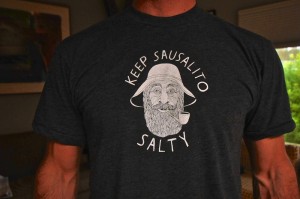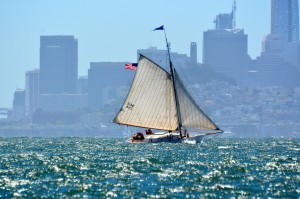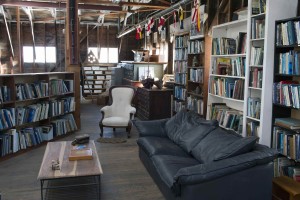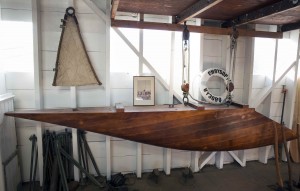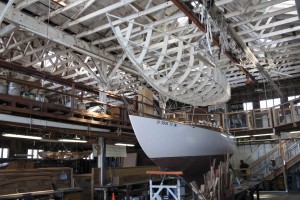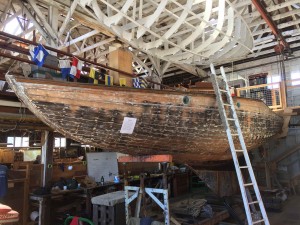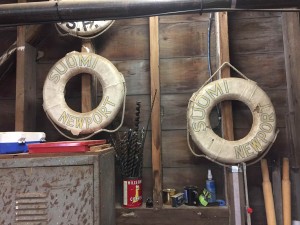Bad Things Come In Threes
Clark August 9th, 2017

We were sailing back to the Spaulding Marine Center from a successful first charter on our 1885 gaff-rigged sloop Freda. We left the charter guests at the Ferry Building, set sail, and managed to lay Sausalito in one tack on the ebb. Volunteer crew Rob and I quaffed artisanal cheeses and fresh figs, leftover from the charter, as we enjoyed spectacular Bay sailing aboard the oldest sailing yacht on the West Coast. I was feeling so cocky about it that I suggested, “People always drop her sails and motor the last mile to Spaulding. There’s plenty of room by Spaulding to drop sail. Let’s sail on down the waterfront.”
Thank God we didn’t actually do that! When we neared Sausalito we started getting hammered by williwaws coming down the slopes, and I called the fight. I went to start the engine, and she wouldn’t start. I tried on battery 1, on battery 2, on both, and she barely turned over. It was bizarre, because the boat had been used both days over the weekend, we’d motored for a good half hour at the start of the charter, and Freda doesn’t have much in the way of an electrical system, just a bilge pump and a few lights, not enough to drain the batteries.
“Uh oh.”
I ran up to the foredeck to drop the jib and ready the anchor, but the strop that holds the sheet tackle to the club-footed jib parted. Now with each williwaw the foredeck was swept menacingly by a loose, 15-foot long jib boom. The jib has a downhaul, as in a line that runs from the foredeck to a pulley on the tip of the bowsprit, then up the luff of the jib to the its head. Without it there’s no way to get the jib down without going to the end of the bowsprit.
With all the flogging the end of the downhaul was carried away, and I had to go to the end of the bowsprit, with the jib boom flailing, to retrieve the end of the downhaul. Once I did I got the jib down, and the jib boom only smacked me in the head once, lightly. It turned out this was the only remaining manila strop on Freda. All the rest had been replaced with modern rope:

I assembled the ancient fisherman anchor, which is more for looks than function, and got it ready to deploy.

Freda behaved herself very well. With just the main up she sat in irons, without really moving forward or drifting back.
I was about to call back to Spaulding for a tow, but decided to give the engine a Hail Mary, now that the batteries had sat for a few minutes. It worked!
Now we just had to douse and gasket the main and we were home free. We loosed the peak and throat halyards to drop the gaff, I started taming the main and tying on some gaskets, then fell through the open main companionway hatch:

There are two ways to avoid falling through a hatch:
1. Close the hatch.
2. Be aware the hatch is open and don’t fall into it.
I did not do either of these, but it’s common practice, of course, to close the cursed hatch before furling the main. Luckily I was able to break my fall with my rib cage. It must have looked terrible, because Rob left the helm to jump to my aid, but I seemed to be okay. A day later I’ve got some nasty bruises on my ribs, but none broken. On the other side I’ve got pulled muscles in my arm pit.
So there you go: Engine that won’t start, parted jib boom strop, and falling through a hatch. Three bad things in rapid succession. I attribute it to being out of real sailing practice, still learning the ins and outs of Freda (the saucy old Manx), and being a bit flustered after all that jib boom dodging.
My dad fell through a foredeck hatch in the middle of a race once. He was nearly 80 at the time, broke a few ribs, and that was the end of that race. I guess if you sail long enough, sooner or later you’ll fall through a hatch.
